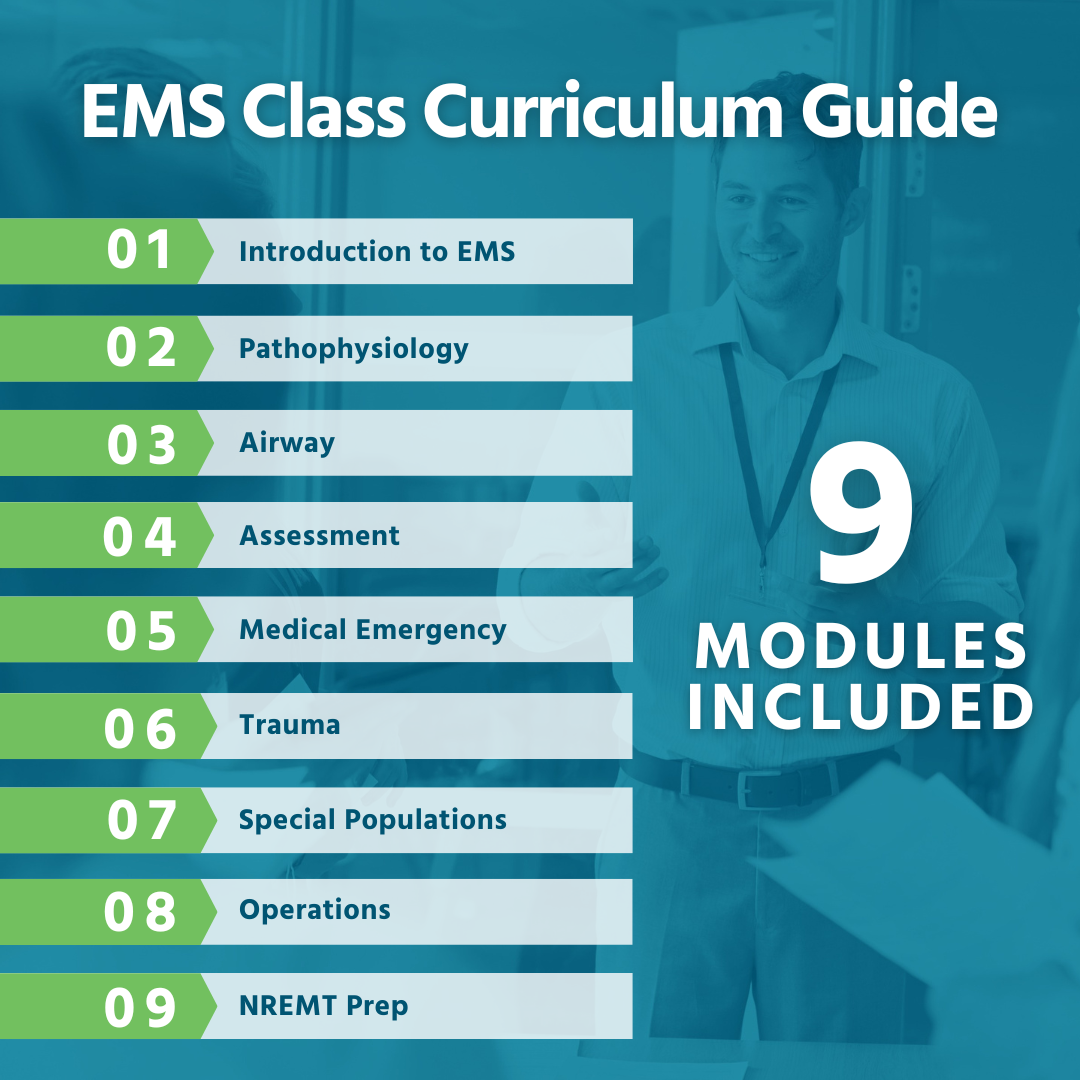
Dan Limmer, BS, NRP

by Limmer Education
Our articles are read by an automated voice. We offer the option to listen to our articles as soon as they are published to enhance accessibility. Issues? Please let us know using the contact form.
Across the country right now, EMS classes are starting and seats are filling up with bright-eyed EMT students. If you're an educator, every new semester is an opportunity to try something new to make this class the best one you've ever taught.
A simple way to bring new content, new energy, and new lessons into your classroom is to use our EMS Class Curriculum Guide. It includes thought-provoking activities to try with your class and a batch of discussion questions for every topic in the EMT curriculum. It also links to a bunch of topical resources like videos and case studies. Then there’s an app correlation guide that will tell you when and how to use different parts of our most popular LC-Ready apps. With or without the apps, it’s a very useful tool for educators. And frankly, it’s nice to have some ready-made content on hand for days when you have extra time at the end of class – or just aren’t feeling up to your full creative potential.

Every instructor can and should run a flipped or hybrid-learning class, where a large portion of in-class time is spent on hands-on learning and engaging discussion that involves everybody in the room. Students learn best when they’re actively doing something during class. That can mean running through practice scenes, competing in quiz-style games, getting everyone in on a conversation about the textbook chapter they read last night – basically, anything that minimizes the amount of time spent just sitting there. Slide decks and textbook work are not ideal for holding attention or for in-depth learning, and can be reserved for homework.
The curriculum guide is filled with mostly free resources to help you plan an EMS course that will keep your students awake and engaged, with flexible options for quality online learning if needed.
It has nine sections, covering all the major parts of the EMT curriculum, from Intro to EMS all the way to NREMT prep. (There’s some ALS content sprinkled in, too.)
Get the guide here. You can view online, download, print by section or print all topics at once.
Start with the Intro to EMS section, where you’ll find activities and resources to use at the start of the semester. In this particular section, there are eight subsections that cover topics like medical-legal and moving & lifting. The topics more or less follow the textbook. For each subsection, there are different types of resources:
Audio Lectures Correlation
Based on the content in our EMT Review Audio Lecture Series, audio content is a great complement to classroom lessons. It’s also a convenient homework assignment – assign a single lecture for students to listen to on their own time. Have them return to class with an outline of what they learned, or a list of questions they’d like to discuss further. The EMT Review audio app is $34.99 for 30 episodes (discounts for purchases of 5+). We think it’s very worth it, but even if you don’t have the audios, the curriculum guide is certainly still useful.
Discussion Q&A and Other Resources
Use them for class discussion, post them to your class’s online message board, or use them as pop quizzes. Each section of the curriculum guide includes topical questions (with answers). But wait, there’s more! You’ll also find links to relevant articles, case studies, charts and videos, plus tips for how to use our EMT Review Plus app.
After Intro to EMS, you’ll move on to the other topics: Assessment, Pathophysiology, Airway, Medical Emergencies, Trauma Emergencies, Special Populations, Operations and finally, NREMT Prep. Each topic has its own subsections (e.g., respiratory, cardiac, abdominal, psychiatric, etc. for Medical Emergencies).
Pick and choose the content you want, or use all of it. Use the guide ahead of time to plan your semester, or use it as a go-to on days where you have extra time or lack the energy. Any way you slice it, the curriculum guide is a valuable tool for any EMS educator.
I can’t thank you enough for the dynamic learning exercises... Using these to engage the students has been outstanding... Using the DLE has made flipping the classroom a more natural process.
– Jeremy G., Lead Paramedic Instructor

Dan Limmer, BS, NRP

Limmer Education

Limmer Education